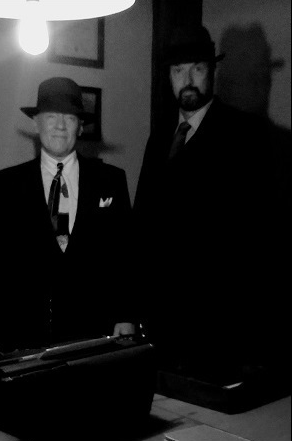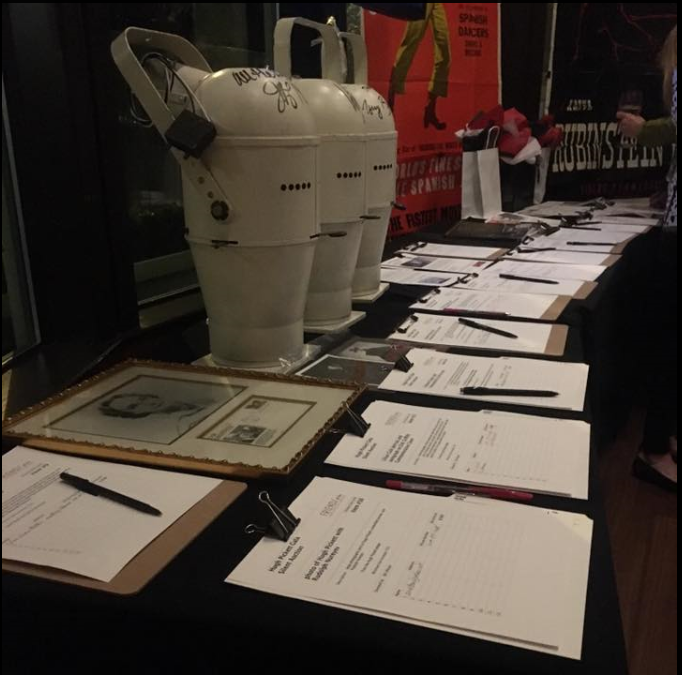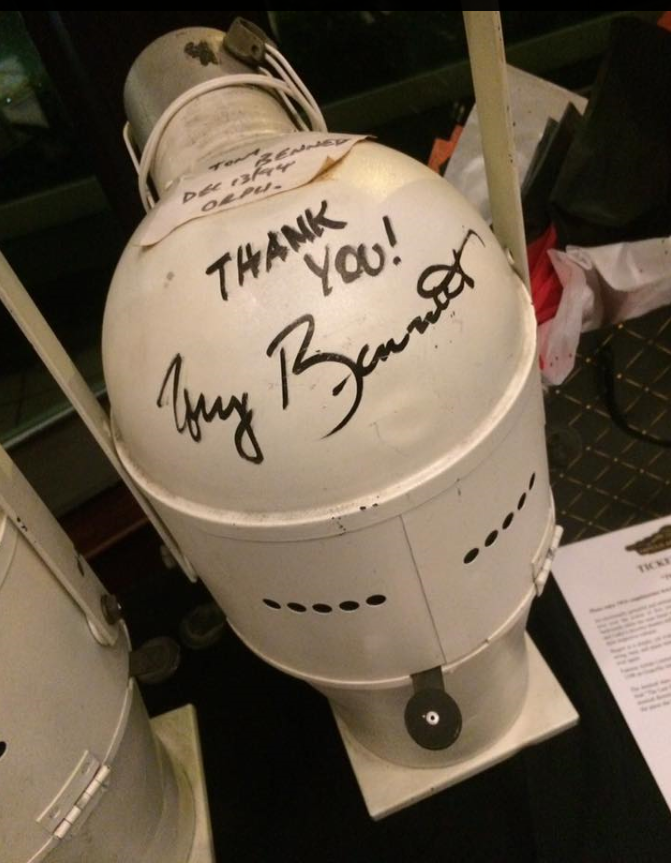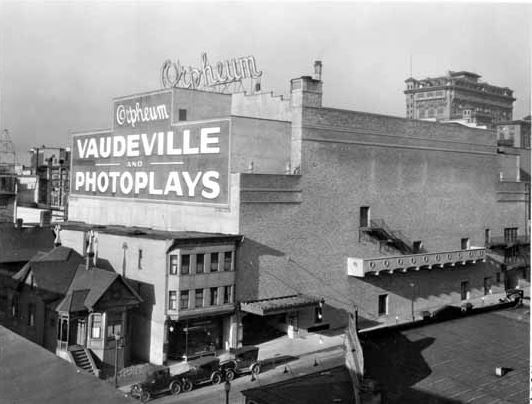A couple of weeks ago Bill Allman, Tom Carter and I were sipping martinis and discussing bits of history that have been saved from the dumpster. The subject of the rescued lights from the Orpheum Theatre came up, and next thing he knew, Bill had agreed to write this blog.
By Bill Allman
Deep in a haunted basement on West Cordova, below Vancouver curio shop, Salmagundi West, lay a collection of vintage stage lights. I blew the dust off one marked TUTS (for

Theatre Under the Stars) and marveled at the antique design. “There are more.” said my friend – theatre historian and painter extraordinaire, Tom Carter. “Where?” I asked. “The Orpheum. A whole collection. All signed by different stars.”
I let out a low whistle. We emerged from the cavernous cellar, went to the Sylvia Hotel for a drink (or three), and decided that we HAD to see the Orpheum’s treasure trove.
Tom and I were organizing a gala fundraiser and auction for the Friends of the Vancouver Archives to benefit the Hugh Pickett Collection. But that’s another story. This one is about lights – stage lights that had illuminated shows for hundreds of thousands of people.
I am fascinated by objects from great performances by famous people. “Screen used” props, and dog-eared shooting scripts are the only ones I care about; likewise, any piece of stage memorabilia with a genuine connection to a gifted artist. So, when we got access to the Orpheum’s cache of autographed lights, AND a very generous donation from the B.C. Entertainment Hall of Fame of three of those lights for our auction, we were in seventh heaven.

There we were, crouched in a room in the Orpheum hidden from public view and illuminated only by a flickering Radio Shack strobe light bouncing off the walls and the tinsel curtain that covered the racks of antique Leko lights. As quickly as we could read the names, we’d call them out with schoolyard excitement. “Tina Turner!”, “Michael Buble!”, “Ray Charles!”. Then we found the three we wanted for the auction – artists that Hugh had presented at one time or another: “Tony Bennett!”, “Victor Borge!”, “And here’s a friend of mine – Jeff Hyslop!”

The lights had almost been lost to time and the dumpster. Another near-tragedy of Vancouver’s urge to purge its past. But eyes that were keen and hearts that long to preserve and celebrate our city’s culture had intervened. The three lights that sold went to homes where their rich history would be appreciated. And the remainder? They rest in a secret room in a famous theatre. And the day will come when they are displayed and perhaps even researched by top people.
Who?
Top people.
Bill Allman is a “recovering lawyer” and instructor of Entertainment Law at UBC. Bill has been a theatre manager (the Vogue), president of Theatre Under the Stars, and a concert promoter and theatre producer through his company, Famous Artists Limited. He is no longer willing to move your piano.





